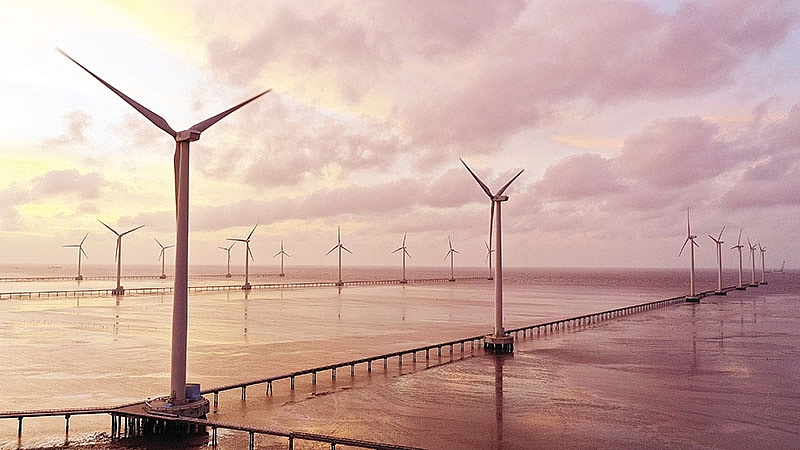Offshore wind farms worth USD billions line up for approval
 |
| Many offshore wind farms are waiting for approval to begin surveys or be added to the planning |
In late May, La Gan Wind Power Development Corporation, the developer of the 3.5GW La Gan offshore wind farm project signed with Northern Regional Center for Marine Environmental and Natural Resources Planning and Investigation (CPIM) a contract for geophysical survey and a contract for geological research. The La Gan offshore wind power project is owned by Copenhagen Infrastructure Partners, Asiapetro, and Novasia.
The geophysical survey and research are key works to help understand the condition of the seabed and stimulate activities to develop surface models and designs for the foundation.
Previously in February, La Gan Wind Power Development Corporation signed four MoUs with Vietnam-based contractors, including CS Wind Corporation, PTSC Mechanical and Construction (PTSC M&C), Southern Petroleum Construction JSC (Alpha ECC), and Vietsovpetro.
Having the total investment of $10.5 trillion, the project is expected to become one of the largest offshore wind farms in Vietnam. The project will contribute to decreasing a carbon emissions by 130 million tonnes during the operation progress.
Meanwhile, Enterprize Energy Group proposed to develop Thang Long Offshore Wind Power Project in Ke Ga cape, Binh Thuan with a total planned installed capacity of 3,400MW and the total investment of $11.9 billion.
The statistics published by the Ministry of Industry and Trade show that 157 offshore wind farms with a total capacity of 61,000MW are waiting for approval for either surveying or to be added to the planning.
The feed-in tariff (FiT) for offshore wind power currently stands at 9.8 cents per kWh. The FiT for land-based wind power is 8.5 US cents. These rates are applicable to plants that begin commercial operation before November 1, 2021 and for a period of 20 years.
Despite great potential and opportunities, offshore wind power also faces some investment risks. For example, the investment cost for offshore wind power is more than double that of onshore wind power. Besides, it takes five to seven years to build a farm, excluding the time needed for investment procedures, licenses, geological surveys, gauging wind conditions, and others.
What the stars mean:
★ Poor ★ ★ Promising ★★★ Good ★★★★ Very good ★★★★★ Exceptional
Related Contents
Latest News
More News
- PM orders investment model for North–South high-speed rail (December 22, 2025 | 17:43)
- First members of Danang International Finance Centre revealed (December 22, 2025 | 17:39)
- Securing capital and efficiency for Vietnam’s 2026-2030 growth ambitions (December 17, 2025 | 10:00)
- Driving double-digit growth through green and circular transformation in Vietnam (December 17, 2025 | 09:00)
- Vietnam bucking trend in the global M&A landscape (December 16, 2025 | 14:20)
- Vietnam’s green transition demands collective financial action (December 15, 2025 | 12:00)
- VIR workshop highlights capital and policy for sustainable development (December 15, 2025 | 11:00)
- National Assembly approves pilot mechanisms to accelerate major projects in Hanoi (December 12, 2025 | 11:29)
- Vietnam eases policy approval requirements, simplifies foreign and outbound investments (December 11, 2025 | 17:53)
- Unpacking new momentum in Vietnam’s M&A market (December 10, 2025 | 09:59)

 Tag:
Tag:



























 Mobile Version
Mobile Version